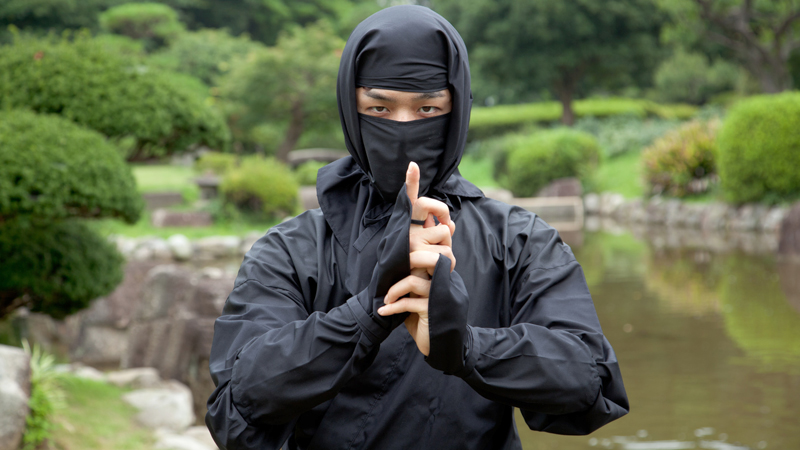Ninjas, or as they are sometimes called, Shinobi, are popular Japanese figures commonly mythologized in media as shadowy figures dressed in black, with incredible stealth, unparalleled skills, and a variety of mystic powers.
Traditionally thought to wear black bodysuits with masks or veils concealing their identities, Ninjas are renowned in pop culture as ultimate spies and assassins. These mysterious warriors have left a huge impact on fiction even outside of Japan, but these depictions very rarely reflect their real-life counterparts who were far more mundane, and yet no less impressive.
Contrary to the popular portrayal of ninjas in media as supernatural assassins, historical ninjas were far more grounded in reality. They were skilled espionage agents who lived in feudal Japan during the 15th to 17th centuries, primarily in the famously turbulent Sengoku and Edo periods.
Known as “Shinobi”, which translates to ‘one who sneaks,’ they were not just lethal fighters but also masters of stealth, infiltration, and guerrilla warfare, serving a variety of important martial purposes as spies and mercenaries.
Their exploits have been well documented in stories, and many real high-profile ninjas have since become legends in Japan, such as Hattori Hanzo, Fuma Kotaro, and Ishikawa Goemon.
Unification of Japan
Ninjas were often employed by Samurai lords to gather intelligence, conduct sabotage missions, and assassinate high-value targets. They relied on their extensive knowledge of the terrain, disguises, and a wide array of unconventional weapons, including shuriken, explosives, and even poison.
After the Tokugawa Shogunate came into power, and the unification of Japan ended the instability, ninjas faded into obscurity.
Despite there being historical records, by their very nature, ninjas were still shrouded in mystery. Not much was known about how they operated, which led to much speculation, exaggeration, and misinformation, sometimes even spread by ninjas themselves on purpose.
This led to the modern image of ninjas as invisible warriors with mystic powers, capable of feats like flight, teleportation, and shape shifting which came about from people’s imagination and fictional stories. While the exact training methods and practices of ninjutsu are shrouded in secrecy, some of its known principles, such as adaptability, remain relevant and practical even today.
Edo period
The earliest written accounts of ninjas can be found in Japanese literature around the Edo period. Notable literary works featuring ninjas became hugely popular in Japan, such as “The Tale of the Gallant Jiraiya”, which spawned a series of novels and kabuki plays. Popular fictional ninjas such as Sarutobi Sasuke, would go on to become a part of Japanese folklore, further mythologizing ninjas in their culture.
The 1960s and 1970s saw a surge in ninja-themed films in Japan, often portraying them as heroic figures. However, it was Hollywood that popularized ninja in the West, with movies like “Enter the Ninja” (1981) and “American Ninja” (1985). These films often embellished ninja abilities, turning them into almost superhuman beings, and sparking a brief ninja craze among enthusiasts.
A lot of what we think we know about ninjas is largely just myths or fiction made up long after their decline. The popular image of the “classic” black ninja costume is, in reality, derived from the attire worn by stagehands in traditional Japanese theatre.
These stagehands were meant to be ignored by the audience, creating an illusion of invisibility. Ninja characters were often dressed similarly, appearing seemingly out of thin air to surprise their victims.
The toe-divided ‘’jika-tabi’’ shoes are also a classic part of the modern ninja look but were not invented until the 20th century, and only some modern practitioners use them for the sake of practicality. Some more recent research questions if ninjas really existed at all, or if they were simply samurai who specialized in more unorthodox skills.




